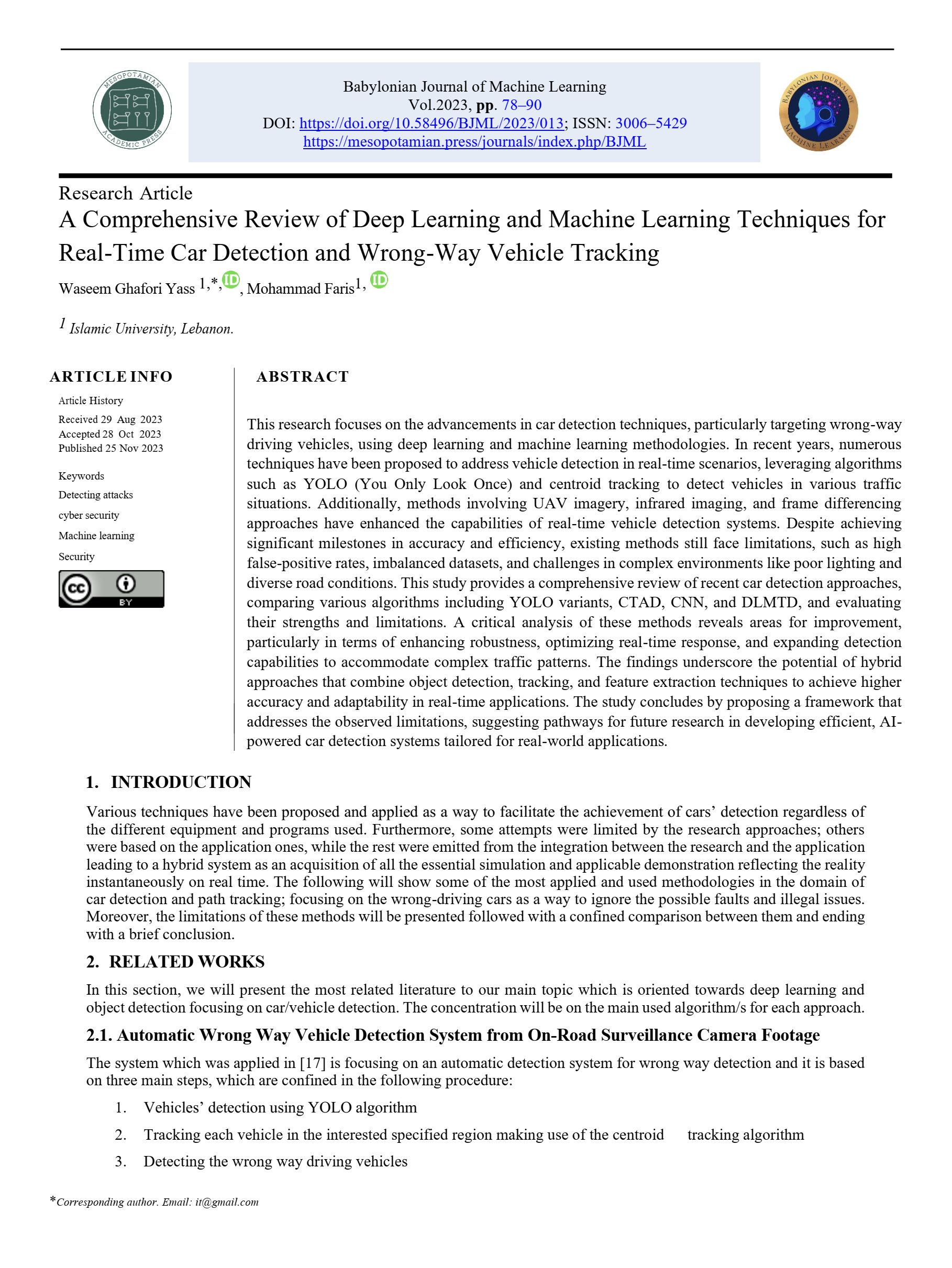A Comprehensive Review of Deep Learning and Machine Learning Techniques for Real-Time Car Detection and Wrong-Way Vehicle Tracking
Main Article Content
Abstract
This research focuses on the advancements in car detection techniques, particularly targeting wrong-way driving vehicles, using deep learning and machine learning methodologies. In recent years, numerous techniques have been proposed to address vehicle detection in real-time scenarios, leveraging algorithms such as YOLO (You Only Look Once) and centroid tracking to detect vehicles in various traffic situations. Additionally, methods involving UAV imagery, infrared imaging, and frame differencing approaches have enhanced the capabilities of real-time vehicle detection systems. Despite achieving significant milestones in accuracy and efficiency, existing methods still face limitations, such as high false-positive rates, imbalanced datasets, and challenges in complex environments like poor lighting and diverse road conditions. This study provides a comprehensive review of recent car detection approaches, comparing various algorithms including YOLO variants, CTAD, CNN, and DLMTD, and evaluating their strengths and limitations. A critical analysis of these methods reveals areas for improvement, particularly in terms of enhancing robustness, optimizing real-time response, and expanding detection capabilities to accommodate complex traffic patterns. The findings underscore the potential of hybrid approaches that combine object detection, tracking, and feature extraction techniques to achieve higher accuracy and adaptability in real-time applications. The study concludes by proposing a framework that addresses the observed limitations, suggesting pathways for future research in developing efficient, AI-powered car detection systems tailored for real-world applications.
Article Details
Issue
Section

This work is licensed under a Creative Commons Attribution 4.0 International License.
Deprecated: json_decode(): Passing null to parameter #1 ($json) of type string is deprecated in /home/u273879158/domains/mesopotamian.press/public_html/journals/plugins/generic/citations/CitationsPlugin.php on line 68
